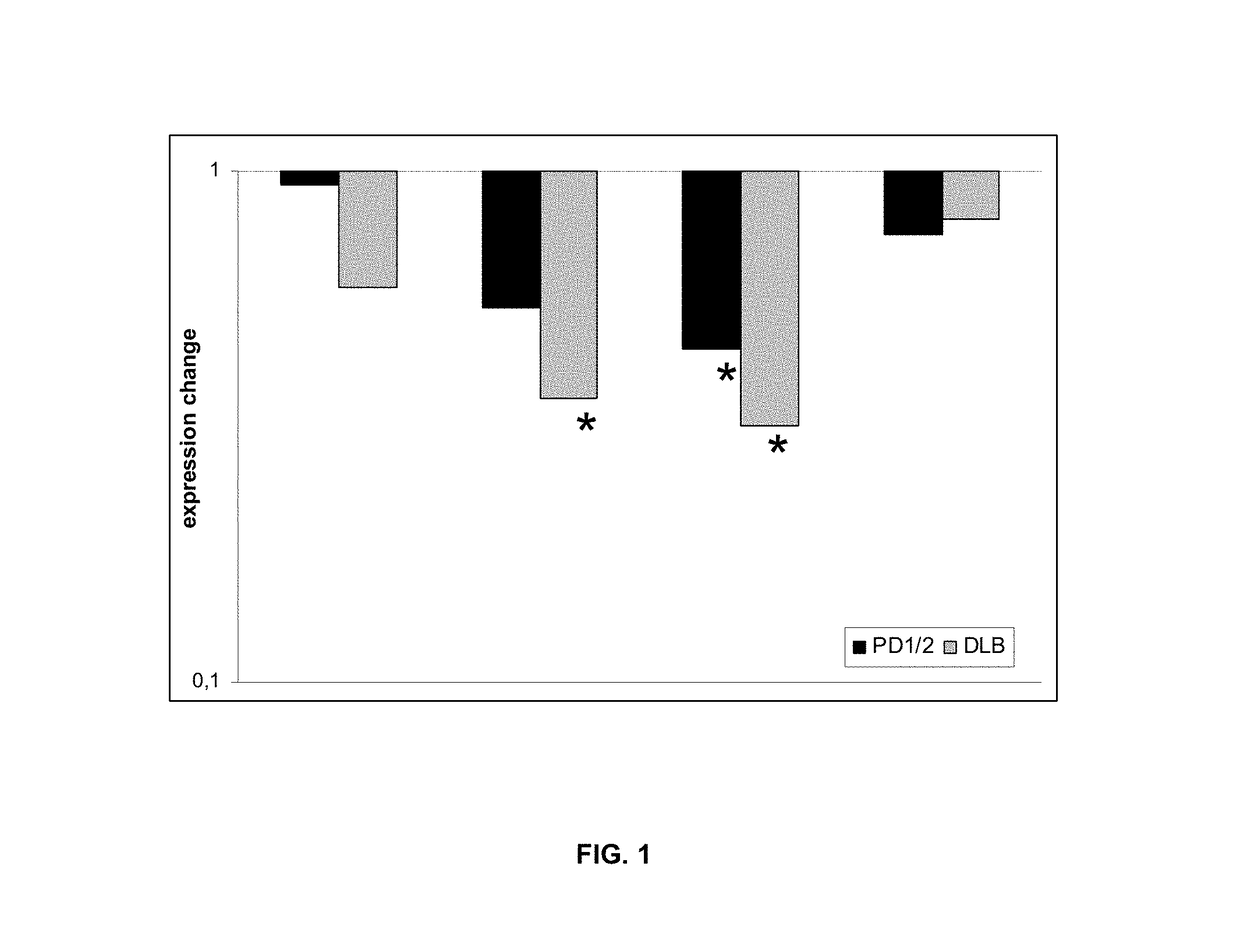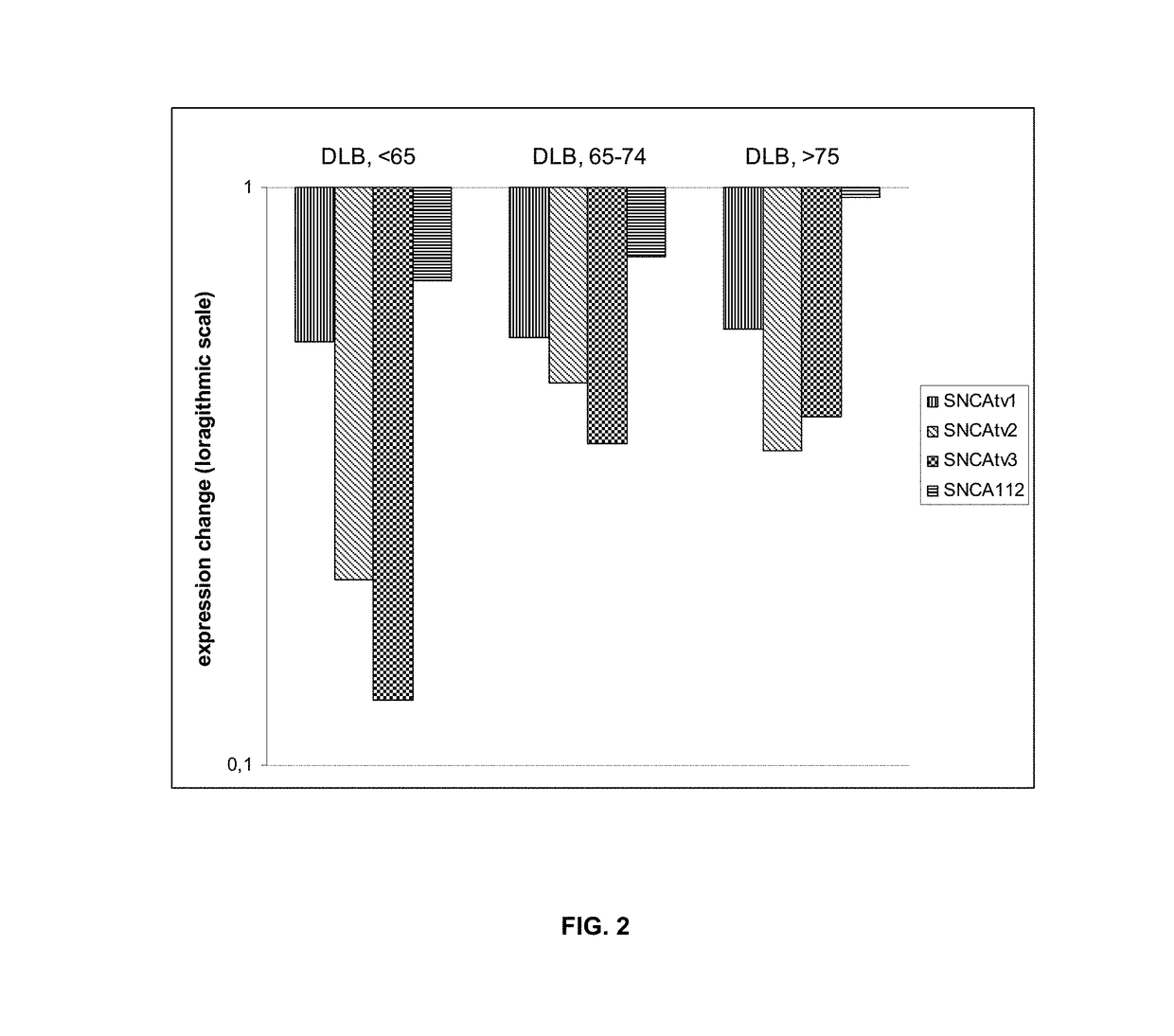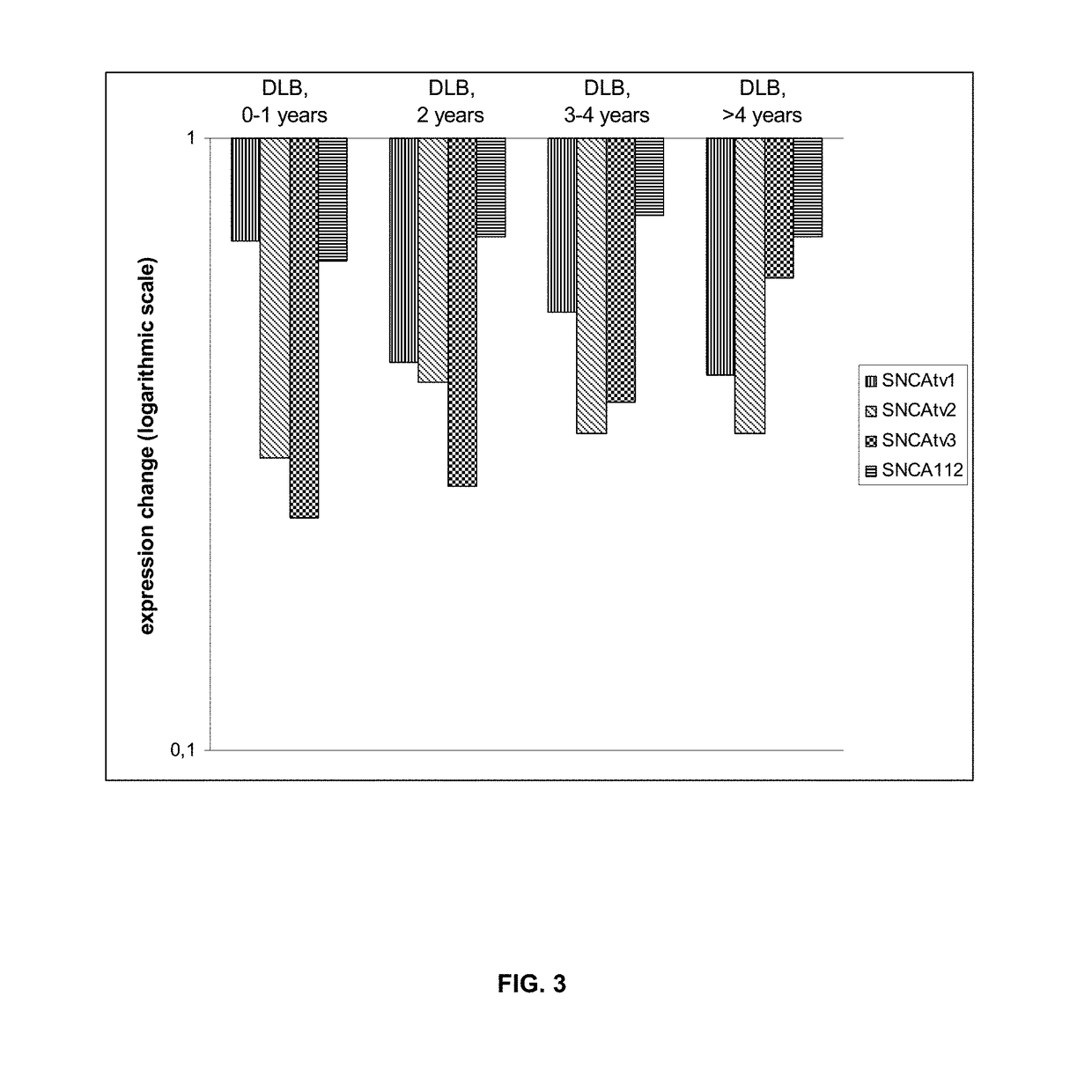Method for in vitro diagnosis of dementia with lewy bodies using alphasynuclein gene transcripts
- Summary
- Abstract
- Description
- Claims
- Application Information
AI Technical Summary
Benefits of technology
Problems solved by technology
Method used
Image
Examples
example 1
the Expression of Transcripts SNCAtv1, SNCAtv2, SNCAtv3 and SNCA112 in Patients Diagnosed with PD, DLB and Control Subjects (Control Subjects Did not Present any Neurological Symptomatology)
[0049]Expression of four transcripts of the alpha-synuclein gene was analysed: SNCAtv1, SNCAtv2, SNCAtv3 and SNCA112, in control subjects and patients diagnosed with DLB or PD. For this purpose blood samples of 8 control subjects, 32 DLB patients and 12 PD patients were collected. The clinical diagnosis of the individuals was conducted in the Departments of Neurology of the Hospitals Germans Trias i Pujol and Bellvitge (Spain).
[0050]RNA from these blood samples was isolated by methods known in the technique and converted to cDNA (complementary DNA).
[0051]For this, 2.5 ml of peripheral blood were extracted from each of the individuals included in the study. This blood was collected in PAXgene Blood RNA tubes (Preanalytix, Hombrechtikon, Switzerland). RNA was extracted using the PAXgene Blood RNA K...
example 2
of Age of Onset of the Disease in Patients with DLB on Expression of Transcripts SNCAtv1, SNCAtv2, SNCAtv3 and SNCA112
[0072]Data of variation of expression of transcripts SNCAtv1, SNCAtv2, SNCAtv3 and SNCA112 in patients with DLB normalized versus control subjects obtained in Example 1 were divided into three groups depending on the age of DLB beginning of the patients: before an age of 65 years (4 patients), between 65 and 74 years (16 patients) and after 75 years (12 patients). The results obtained are summarized in the following Table 4 and shown in FIG. 2.
TABLE 4SNCAtv1SNCAtv2SNCAtv3SNCA112DLB patients0.540.210.130.69who debuted(0.32-0.93)(0.15-0.29)(0.12-0.14)(0.50-0.98)with diseasebefore age of65 yearsDLB patients0.550.460.360.76who debuted(0.52-0.58)(0.38-0.54)(0.33-0.39)(0.52-1.09)with diseasebetween 65and 74 yearsDLB patients0.570.350.40.96who debuted(0.47-0.68)(0.26-0.48)(0.35-0.47)(0.64-1.43)with diseaseafter 75 years
[0073]As in the case of Example 1, the data shown in Ta...
example 3
of Time Since Diagnosis of DLB on the Expression of SNCAtv1, SNCAtv2, SNCAtv3 and SNCA112 Transcripts
[0078]Data of variation of expression of transcripts SNCAtv1, SNCAtv2, SNCAtv3 and SNCA112 in patients with DLB normalized versus control subjects obtained in Example 1 were divided into four groups according to time since diagnosis: 0 to 1 year (6 patients), 2 years (9 patients), among 3 and 4 years (7 patients) and more than 4 years (6 patients).
[0079]The results obtained are summarized in Table 5 and represented in the FIG. 3.
TABLE 5Time ofdiagnosis(years)SNCAtv1SNCAtv2SNCAtv3SNCA112between 00.680.30.240.63and 1 year(0.64-0.72)(0.23-0.40)(0.21-0.28)(0.35-1.13)2 years0.430.40.270.69(0.34-0.54)(0.36-0.45)(0.23-0.32)(0.48-1.05)between 30.520.330.370.75and 4 years(0.41-0.66)(0.23-0.46)(0.35-0.40)(0.73-0.79)more than 40.410.330.590.69years(0.29-0.57)(0.32-0.34)(0.50-0.68)(0.41-1.16)
[0080]As in the case of Example 1, the data shown in Table 5 were significant:[0081]In the case of decrea...
PUM
| Property | Measurement | Unit |
|---|---|---|
| Fraction | aaaaa | aaaaa |
| Time | aaaaa | aaaaa |
| Time | aaaaa | aaaaa |
Abstract
Description
Claims
Application Information
 Login to view more
Login to view more - R&D Engineer
- R&D Manager
- IP Professional
- Industry Leading Data Capabilities
- Powerful AI technology
- Patent DNA Extraction
Browse by: Latest US Patents, China's latest patents, Technical Efficacy Thesaurus, Application Domain, Technology Topic.
© 2024 PatSnap. All rights reserved.Legal|Privacy policy|Modern Slavery Act Transparency Statement|Sitemap



